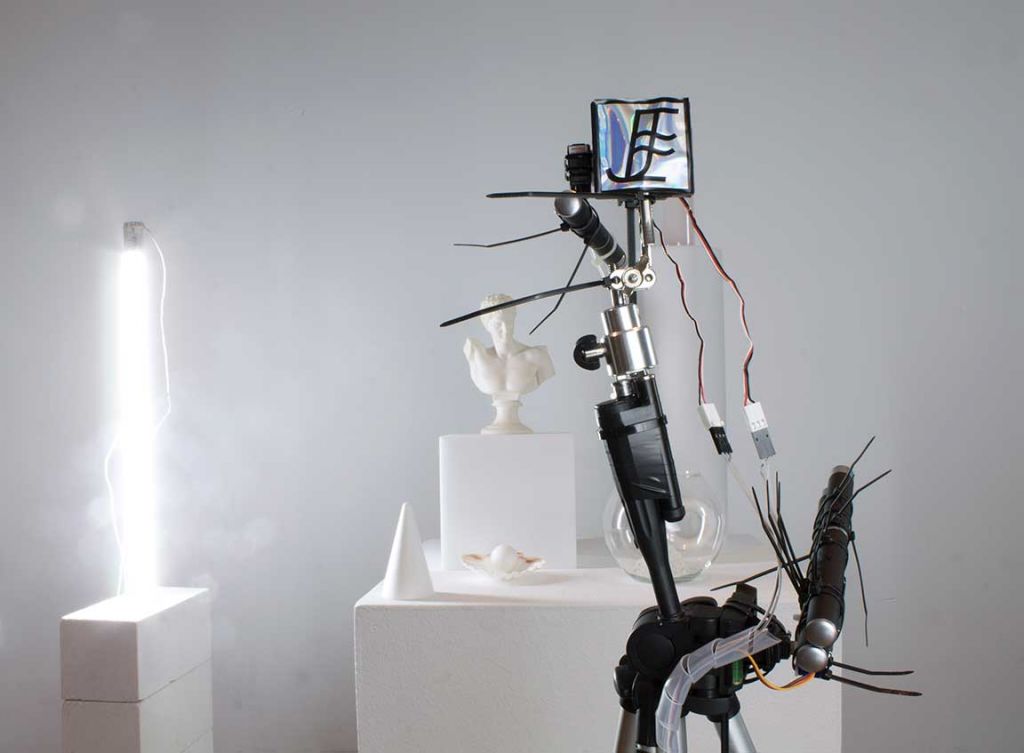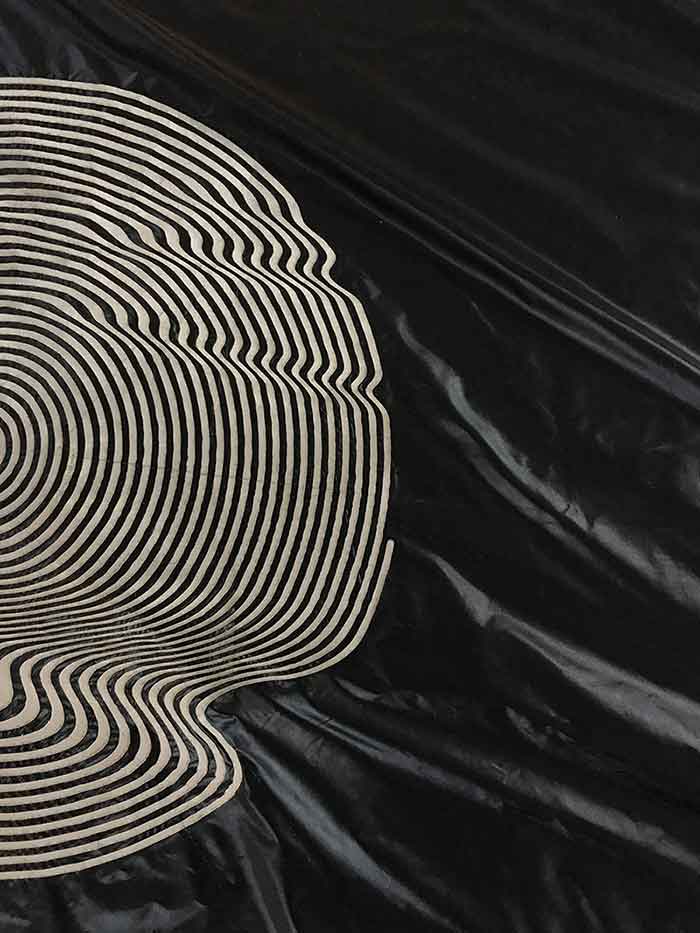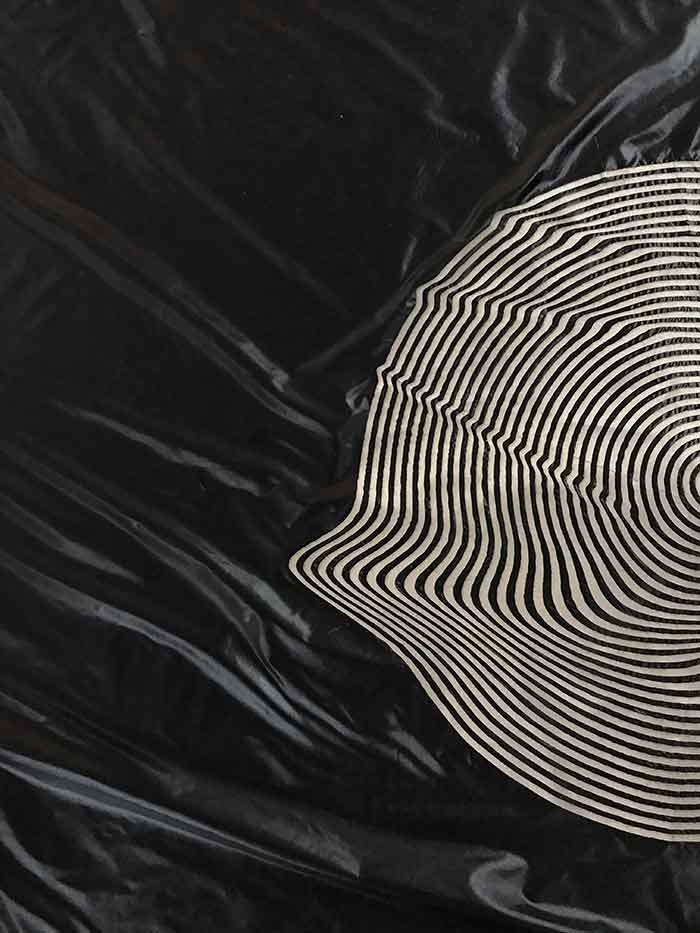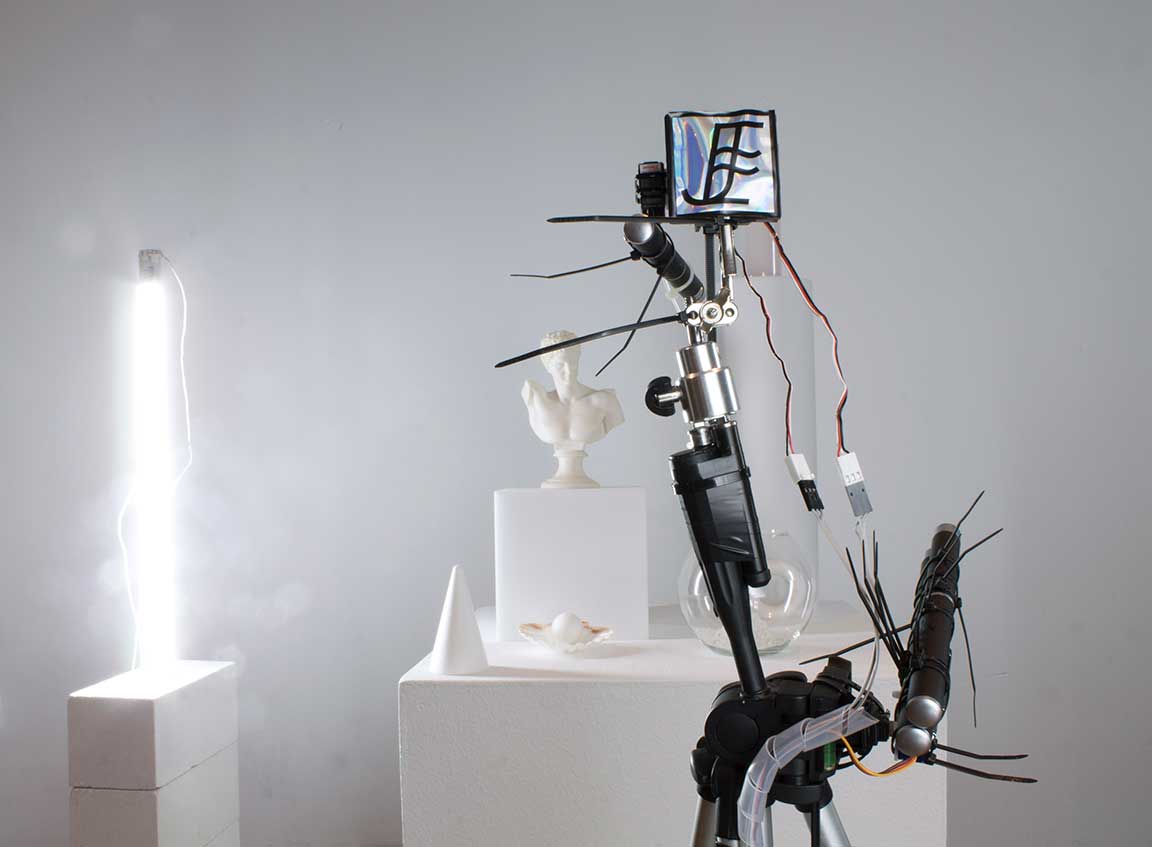Interview by Tony Cho

A guttural noise enters the atmosphere and, in an instant, is transformed into a reverb of vibrations coursing through the skin like a thousand echoes hitting every inch of the body. As vibrations hit the body, in an instant, the oscillation of lights seems to flicker to the tempo of the vibrations as if all senses are converging into one.
In a moment, there is nothing left but the synchronisation of senses, almost overwhelming but soothing as the unified stimuli are being showered down upon. This is what an audience member can expect in Phase In, Phase Out, EJTECH’s latest sound installation. In Phase In, Phase Out, EJTECH focuses on delivering senses in their rawest and most primordial forms.
Creating space to really feel the force of all of its sensations, the audience’s attention is forced to be in the moment. If senses and the manipulation of senses are seen as a tool for understanding the world, for EJTECH, they are the opposite. Instead, they are the tools that give the opportunity of feeling the force of the world rather than understand it. In some sense, the experience is not meant to be explainable but rather to be transcendental in nature.
Even in earlier works such as New Ways of Viscosity, this interest in exploring more primordial and abstracted chimaeras of sensations is present. In this project, EJTECH focuses on bringing materiality and physicality back into our vocabulary of senses. With the attention of real estate long dominated by the highly curated and slick world of visual stimuli provided by the internet, EJTECH gives room for the audience to explore the sense of touch and space in curious and odd ways through a variety of objects and sounds.
As if to say that detox is required from the highly organized and flashy nature of our social media culture, things get a bit quirky in New Ways of Viscosity as objects and sounds are curated in ways to help you explore your senses rather than keep your attention.
Perhaps both works give clues as to why EJTECH defines themselves to be interested in techno spiritualism. Because it is precisely through their technological instrumentalism that space is created for reflection and feeling. Whether it is going back to or becoming one with our senses, EJTECH work seems like a detox from the highly curated and systemised world of technology and interfaces.
Instead, EJTECH gives an alternative to what technology can do for us, not only to please our secular tastes but to reach for a higher plane of experience – to feel oneness and connectedness to the world not only through our minds or our eyes but through the sensations deep within the body.


For our audience that is not familiar with your work, could you tell us a bit about your background and inspirations?
We come from distinct disciplinary and cultural backgrounds. Judit Eszter Karpati, born in Hungary, is a textile artist who recently earned her PhD in the study of crossmodal and soft interfaces. Esteban de la Torre is a media artist working with sound and electronics from Mexico. We met at MOME (Moholy-Nagy University of Art and Design) in Budapest.
Under the label EJTECH, we combine our knowledge to weave a piece of fabric from these different practices and threads of thought. Influenced by the philosophy of new materialism, holonic studies and the movement of phenomenology, we aim to create experiences through our work that incite an individual and personal process to the “viewer”.
Inspired by the occult and alchemist practices of material divination, our pieces create a threshold. It is up to the visitor to walk through.
In Phase In, Phase Out, you seem to focus on the audience achieving a crossmodal experience in relation to sound. When and where did you guys start to get interested in ‘crossmodalism’?
While studying the process of how to devise more meaningful, interwoven, integrated experiences, we began exploring crossmodal practices. As anthropologist David Howes reflects, “No matter how prominent or engrossing one strand of perception may appear, it is still knotted into the fibers of our multisensory experience”. (Howes, D. (2005). Empire of the Senses: The Sensual Culture Reader. Oxford.Berg).
Much of our earlier work is based on creating experimental interfaces aimed at musical explorations, many of which were made out of textile, creating new methods to interact with, perform and experience sound. During this period, we became engaged in cross-linking sensorial modalities, extending tangibility, solidity and self. Contemporaneity seems to be awakening and discovering neglected senses.
We believe this growing awareness represents somewhat of an overdue insurgency against a blunt deprivation of sensory experience as a side effect of our technologised world.
Much of our work is based on textiles, as we believe in these as a metaphor that strings together the macrocosm and the microcosm, the interwoven reflection of interpersonal relationships, the linking of vertices and edges that create a network or system, our second skin and most definitely the next interface for human-computer interactions.
Are the movements in the textiles meant only to occupy space via sound, or do they also represent an aesthetic choice from your point of view?
The vibrational phenomena travelling through the textiles is the raw result of electromagnetism involved in order to manifest sound. This is without the intent of aestheticization.
On the other hand, we “exploit” frequencies and assign materials to highlight or beautify this expression. For example, lower frequencies, some even to the extent of being inaudible to the human listening spectrum, are paired with airy textiles, such as printed organza or silk.
This “Draping Sound” series is the newest addition to the sound system. While writing the multichannel sound piece, these movements are highly considered and not regarded as secondary to sound.
Sonorous phenomena are always on the verge of becoming something else. As it unfolds, sound ripples through matter, and articulates time, allowing space to emerge.
You have mentioned in previous interviews the ‘material force of sound’ as a concept that interests you. Would you define the sounds coming from your projects as ‘man-made’ or coming straight from the materiality of your structures?
Whilst by band-passing and spreading the source sound, we can achieve a true high-fidelity reproduction of the intended music, yet, this is not our aim. As you point out, we edge to explore the materiality of our structures by producing a sound space that can only be created by the substance and placement of these elements.
We almost exclusively work with square waves, conceiving sound like a constructive material and exploring the timbre of textiles. We are not interested only in sounds but inaudibility. We are highly committed towards corporeal hearing, meaning acoustic perception does not only happen within the ear canal but throughout the body as a whole.
We arrange sound movements in spatial models based on invisible geometries, bridging a relation between the structure of textiles, sound, and the human body. Sound is an existential pattern.
Could you explain what techno spirituality means to your practice? What about techno-spirituality would you like your projects to express?
Secular spirituality is a phenomenon that recognises the link between technology and spirituality, as opposed to viewing technology in competition with spirituality – Newman, Jay (1997) Religion and Technology: A Study in the Philosophy of Culture.
Currently, spirituality and an individual’s connection to the “divine” is limited and moderated by middlemen and restricted within a “holy structure”.
Religion as technology has proven to be helpful in organising populations and securing norms and morals are followed, yet presently, these same sets divide us and completely eradicate our notion of oneness and unity with the universe we exist in.
Within our practice, we propose technospiritualism is inner engineering using contemporary tools and scientific thought to ease and enhance our assimilation and perception of the eternal now.
In New Ways of Viscosity, you focus on a ‘return back to materiality’. What exactly does materiality afford us, and what does returning back to it imply?
The exponential invasion of digital carvings landscaping our lives has led to the contemporary craving for lost tactility. An arsenal of breathtaking immersive simulations and jaw-dropping renders has proven futile to quench our thirst for the knowledge gained from the act of touch.
Objects are constrained to an onscreen life span, casting shadows and caustic reflections, yet flattened and intangible. “Vision is an extension to the sense of touch” as J. Pallasmaa wrote in his book The Eyes of the Skin. All senses can be regarded as specialisations of augmented skin.
This exercise, in return to materiality, aims to the de-hierarchization of the senses. The sense of vision, the dominant sense of the modern human experience, while useful and efficient, also creates an inherent feeling of distance and alienation. Perception of reality via eyesight is external, whilst other sensorial perceptions, such as sound or touch, happen between the borders of the body and within.
What is your chief enemy of creativity?
Judit: Compulsiveness.
Esteban: The pointless illusion of perfectionism against vector time.
You couldn’t live without…
Judit: Consciousness.
Esteban: Pointless perfectionism highlights the illusion of vector time.






